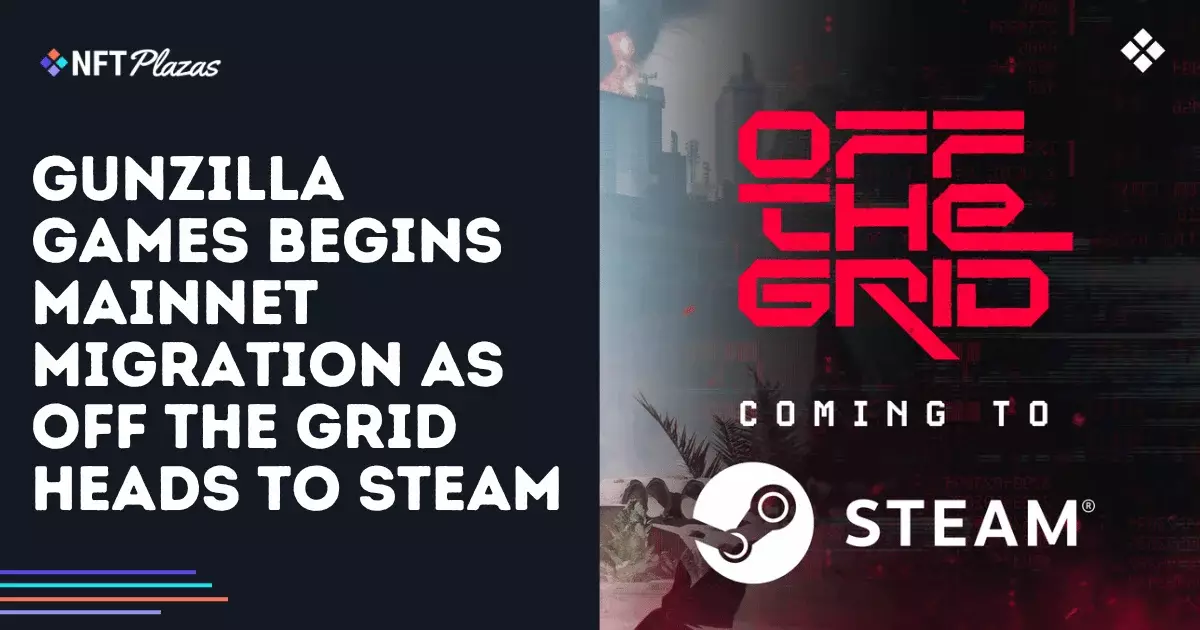In recent months, companies like Gunzilla Games have boldly pushed the narrative that blockchain technology will revolutionize gaming by granting players permanent ownership of digital assets. This claim is at the heart of the current fervor surrounding NFT and blockchain integration into mainstream gaming. However, beneath the promotional gloss lies a complex web of challenges and contradictions that threaten to undermine these lofty promises.
What is often overlooked is that true ownership within gaming should be akin to ownership in the physical world: tangible, reliable, and free from the whims of technology providers. Blockchain enthusiasts tout that players can hold onto skins, weapons, and loot indefinitely on-chain, but the reality is more nuanced. The migration of 21,000 users out of 17.3 million wallets—only a tiny fraction—exposes just how nascent and fragile this on-chain ecosystem remains. The technical hurdles, compliance requirements, and platform restrictions make full, seamless player ownership more of a dream than an imminent reality.
Furthermore, the hype around asset activity—over 413,000 decodings and nearly $13 million in token volume—seems impressive at first glance. Yet, such figures are heavily driven by speculative trading rather than genuine engagement. This raises alarming questions about whether players are truly interested in owning assets or merely riding the wave of financial speculation. The industry’s obsession with token volumes and on-chain metrics often masks the lack of meaningful player-centered design, reducing gaming to a financial gamble rather than entertainment.
Regulatory Ambiguity and Its Unrealized Promise
Central to the blockchain gaming narrative is the promise of regulatory clarity—the assumed pathway to mainstream acceptance. Gunzilla’s pursuit of licensing such as VASP (Virtual Asset Service Provider) shows an awareness of the necessity to operate within legal frameworks, ostensibly to legitimize their ecosystem. Still, the reality is that regulatory environments worldwide remain volatile and unpredictable.
Many blockchain projects tout their licenses and partnerships as signs of legitimacy yet often fail to address the contentions surrounding regulation—particularly how policies evolve and threaten to wipe out entire ecosystems overnight. Gunzilla’s plan to expand on-chain features once licensing is secured sounds optimistic, but it underestimates the sheer difficulty of navigating complex and often conflicting jurisdictional requirements. It’s increasingly evident that the regulatory landscape isn’t a stable foundation but a moving target, leaving most projects vulnerable to sudden restrictions, bans, or onerous compliance costs.
The industry’s narrative about “being on the right side of regulation” serves more as marketing spin rather than a viable safeguard. True compliance requires ongoing adaptability and transparency, qualities that many so-called “pioneering” blockchain studios do not demonstrate convincingly. Instead, they risk learning this bitter truth too late, leaving their ecosystems stranded or devalued.
The Disconnection Between Tech Advancements and Player Experience
Gunzilla’s updates to gameplay—for instance, introducing new arenas, weapons, and aiming mechanics—appear to be a genuine effort to improve player experience. Despite these updates, the core issue lies in the disconnect between technological innovation in blockchain integration and actual gameplay quality.
The focus on integrating blockchain features on consoles and PC, while commendable in terms of technical ambition, distracts from the fundamental question: does this technology enhance fun and fairness? All too often, blockchain features—NFT skins, on-chain assets, validator nodes—add layers of complexity that alienate casual players. Instead of fostering a broader player community, these innovations tend to create a siloed environment where only a select few understand or care about on-chain intricacies.
Additionally, the reliance on testnet environments to comply with platform policies highlights a form of lip service. True innovation would mean seamless integration that respects both regulation and the player’s experience, not half-measures that keep blockchain features in a perpetual grey zone. Such approaches risk diluting the core appeal of gaming—entertainment—by prioritizing speculative mechanics over gameplay integrity.
The Broader Market and the Myth of Scalability
While Gunzilla prepares for the full migration of its assets and establishes partnerships with decentralized exchanges, these moves are driven by a narrative of scalability and growth that appears overly optimistic. The industry’s obsession with token pools, validator nodes, and marketplace volumes creates a veneer of progress, yet it often ignores the practicality of mass adoption.
Blockchain gaming remains fundamentally ill-suited for mainstream players who prioritize stability, simplicity, and value. The idea that tokenized assets will become an integral part of the gaming economy assumes a seamless, low-cost, low-barrier environment—an assumption that is laughably disconnected from reality. Network congestion, high transaction fees, and technical barriers continue to hinder smooth gameplay experiences, especially outside enthusiastic niche communities.
Importantly, these developments serve more as marketing tools than genuine solutions. The focus on expanding ecosystems and licensing overshadows the core challenge: convincing average gamers that blockchain integration improves their experience, not complicates it. Until scalability, ease of use, and regulation are genuinely addressed, the entire premise of blockchain gaming as a transformative force remains afloat on a fragile, speculative foundation.
The Frontlines of a False Revolution
Ultimately, the industry’s push towards integrating blockchain into gaming appears more like a calculated attempt to capitalize on technological hype than a true effort to elevate player experience. While studios like Gunzilla make incremental progress—launching new features, expanding ecosystems—the underlying model relies on overpromising and underdelivering.
The narrative that blockchain will revolutionize ownership, fairness, and digital economy is increasingly exposed as overly simplistic. It serves the interests of investors and entrepreneurs eager to monetize on novelty rather than genuinely empower players. Until regulatory clarity, technological stability, and a focus on gameplay are prioritized over hype, blockchain gaming will remain a fleeting, somewhat illusory frontier—an ambitious mirage more than a sustainable future.

